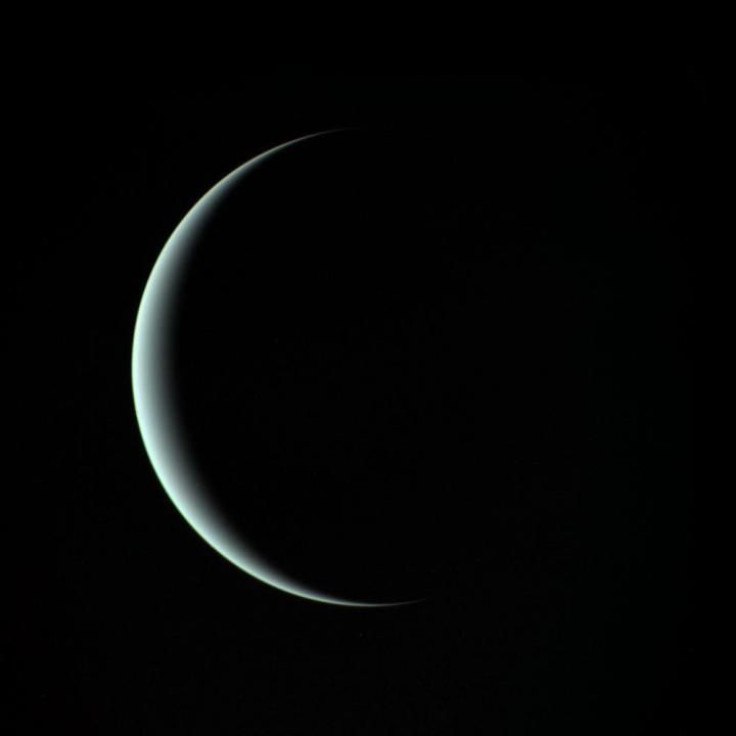Uranus Stinks: Planet's Cloud Tops Smell Like Rotten Eggs

A long-debated theory about Uranus, one of the outer planets of our solar system, has been confirmed — the planet stinks, just like rotten eggs.
For decades, scientists have posited Uranus’ upper atmosphere contains hydrogen sulfide, the gas that gives rotten eggs their foul smell, but the idea was not proven until an international team of researchers took a close look at the planet, in a way like never before.
Using the 8-meter Gemini North telescope in Hawaii and its Near-infrared Integral Field Spectrometer, the group analyzed sunlight reflected by a region sitting right above the visible cloud layer in Uranus’s atmosphere and found the signature of hydrogen sulfide swirling there. The discovery, which according to the group was too hard to make, confirms the stinking gas is one of the key elements behind the planet’s cloud tops and not ammonia, which dominates over inner gas giants – Jupiter and Saturn – in the form of ammonia ice.
Leigh Fletcher, a member of the research team from the University of Leicester in the United Kingdom, said cloud decks like the one over Uranus form under the effect of condensation, something that locks the gas involved in the process in a deep inner reservoir which is impossible to penetrate from ground-based telescopes.
"Only a tiny amount remains above the clouds as a saturated vapor," Fletcher added. "And this is why it is so challenging to capture the signatures of ammonia and hydrogen sulfide above cloud decks of Uranus.”
However, Gemini and its instrument, originally designed to observe unstable regions around massive black holes, came through and solved the long-held mystery. "If an unfortunate human were ever to descend through Uranus's clouds, they would be met with very unpleasant and odiferous conditions," study lead Patrick Irwin from the University of Oxford said while describing the foul odor present in the planet’s upper atmosphere.
But, it is worth noting the rotten-egg smell won’t be the worst thing to happen if humans ever decided to visit Uranus. In fact, as and when they’ll peer deep into the planet’s atmosphere, extremely low temperatures – around 200 degrees Celsius below zero – combined with high levels of hydrogen, helium, and methane will make survival impossible.
That said, Uranus and its associated stink might still do a pretty good job at helping scientists understand the origin story of our stat system and the bodies inhabiting it. According to Fletcher, it is plausible that the difference between of gas content in cloud decks swirling over ice giants, like Uranus and Neptune, and gas giants was imprinted by the temperatures and location of where these bodies came to be.
The study of the hydrogen sulfide and other gases swirling over other planets could be the key to better understand how the solar system’s planets formed, with some being rocky bodies, while others are gas and ice giants. The work could even help us refine the models detailing where they formed and if they migrated from the original place sometime during the later stages of evolution.
The study, titled “Detection of hydrogen sulfide above the clouds in Uranus’s atmosphere,” was published April 23 in the journal Nature.
© Copyright IBTimes 2024. All rights reserved.











